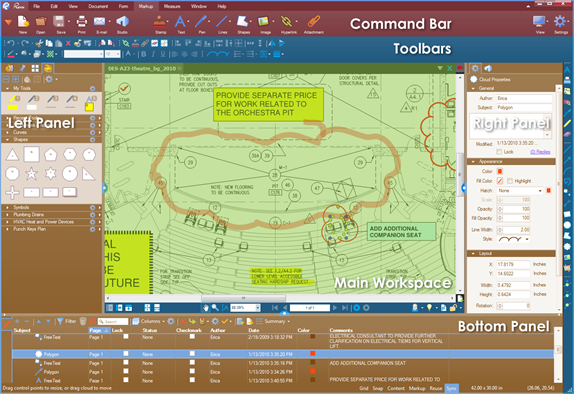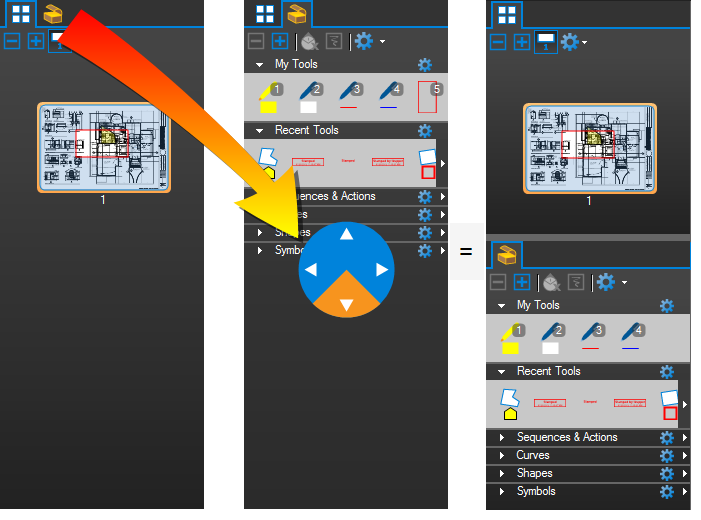
At the top of the Revu window you will see the Command bar. The Command bar provides access to tools and commands organized by group. It can be hidden or shown by clicking the up or down arrow in the upper-right corner of the application. It is customizable. Below the Command bar and to the right edge are optional Toolbars. These toolbars provide customizable, one-click access to the tools you need most.
PDFs appear in the Main Workspace. Multiple PDFs can be opened at the same time, each in its own tab, allowing you to easily switch between them.
There are three Panels around the Main Workspace which contain a number of tabs. These tabs provide quick access to tools for viewing, navigating, annotating, and gathering information from a PDF. Revu provides Left, Right, and Bottom Panels and places commonly used tabs in them by default, but you can freely move any tab to any panel, and it is even possible to detach a tab into a floating panel for more flexibility. To detach a tab, click and drag it off the panel area. Once you create a floating panel, any number of tabs may be added to the panel.
Below the Main Workspace but above the bottom panel, notice the Navigation bar, which contains tools to help navigate documents. This bar is customizable like a toolbar. At the very bottom of the application window, below the bottom panel, is the Status bar, which contains additional information and tools to help you interact with PDFs smoothly.


 &
&  ) on the panel border to toggle this setting. Expanding in this manner enables more columns to be displayed in the
) on the panel border to toggle this setting. Expanding in this manner enables more columns to be displayed in the